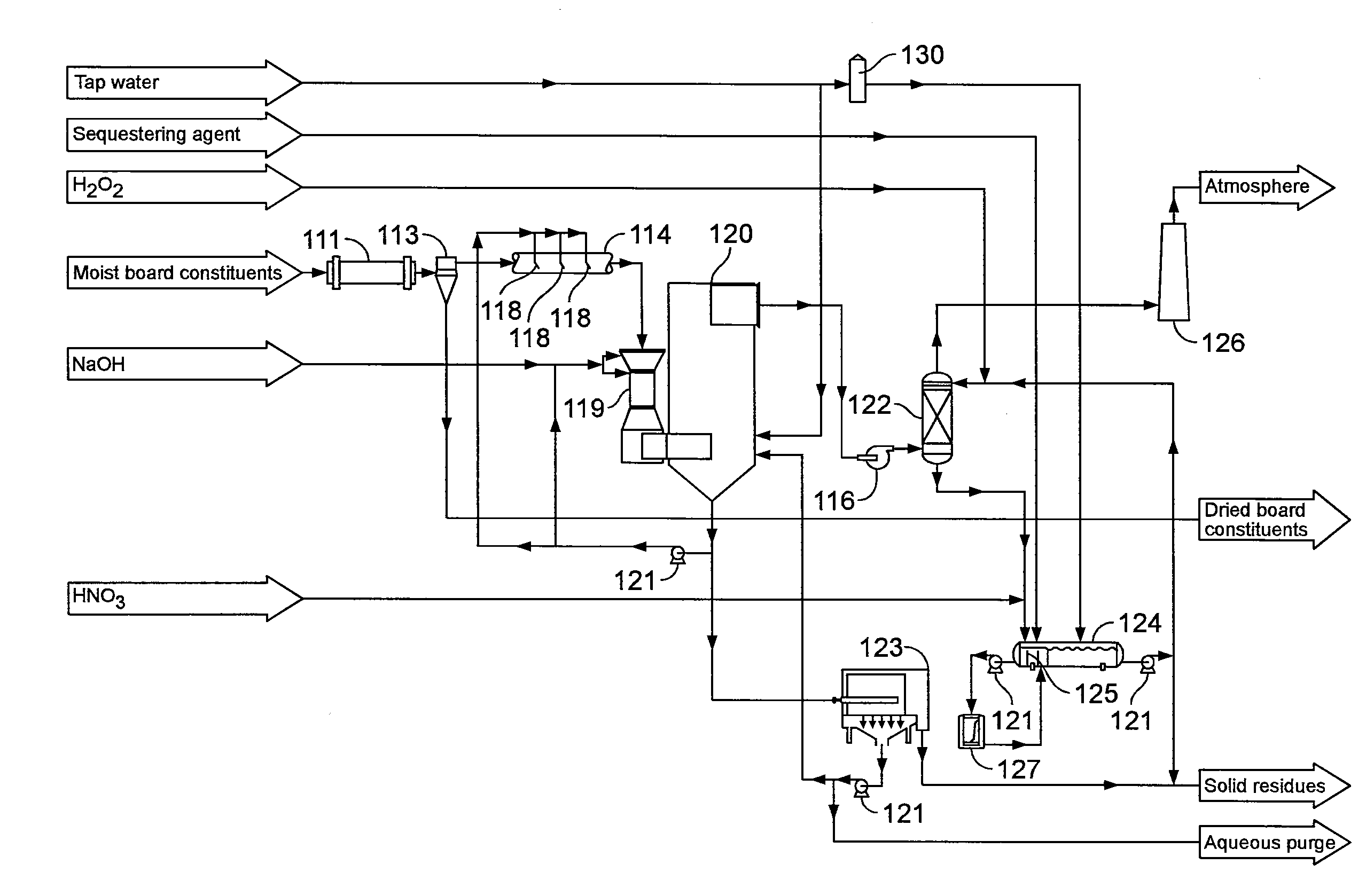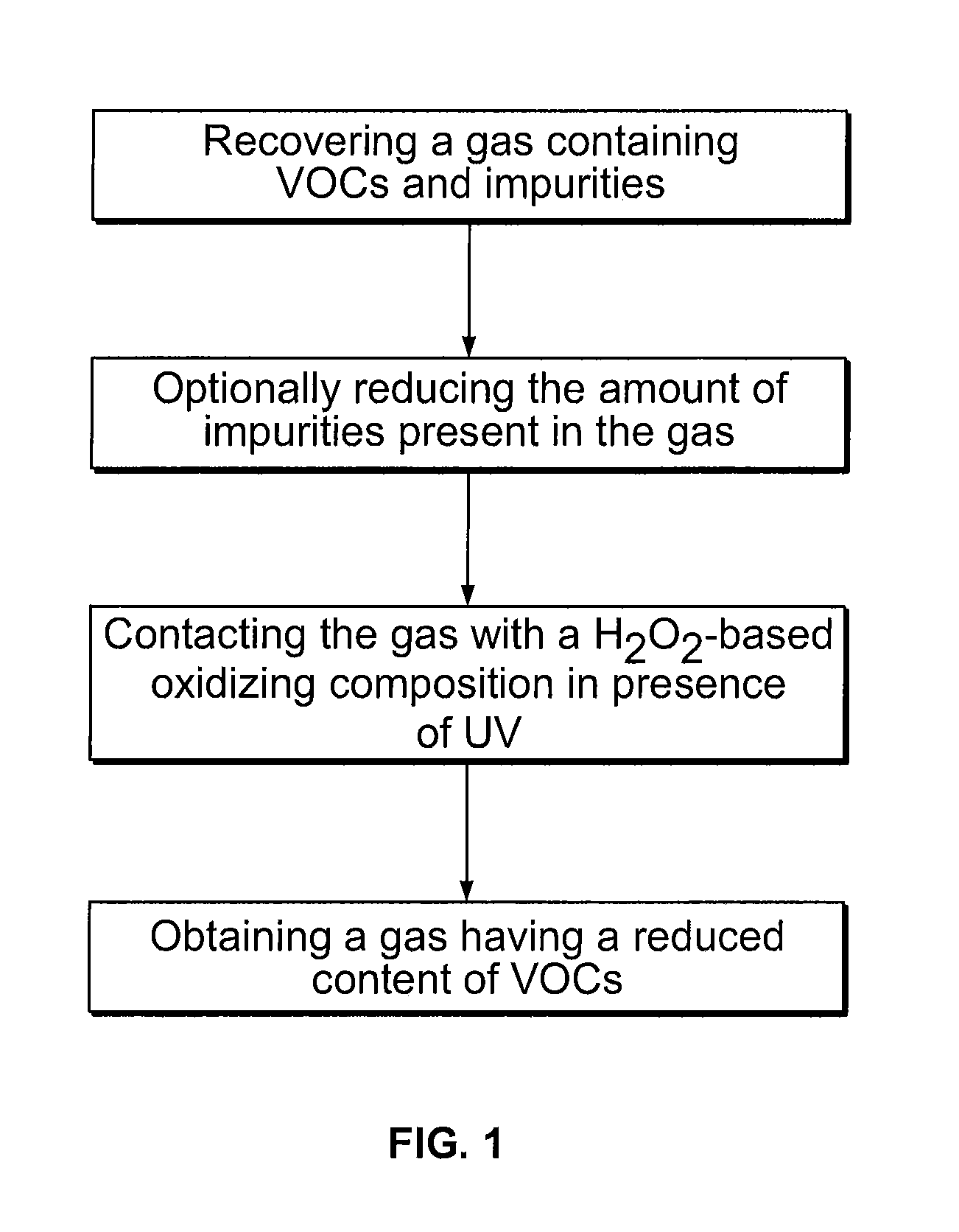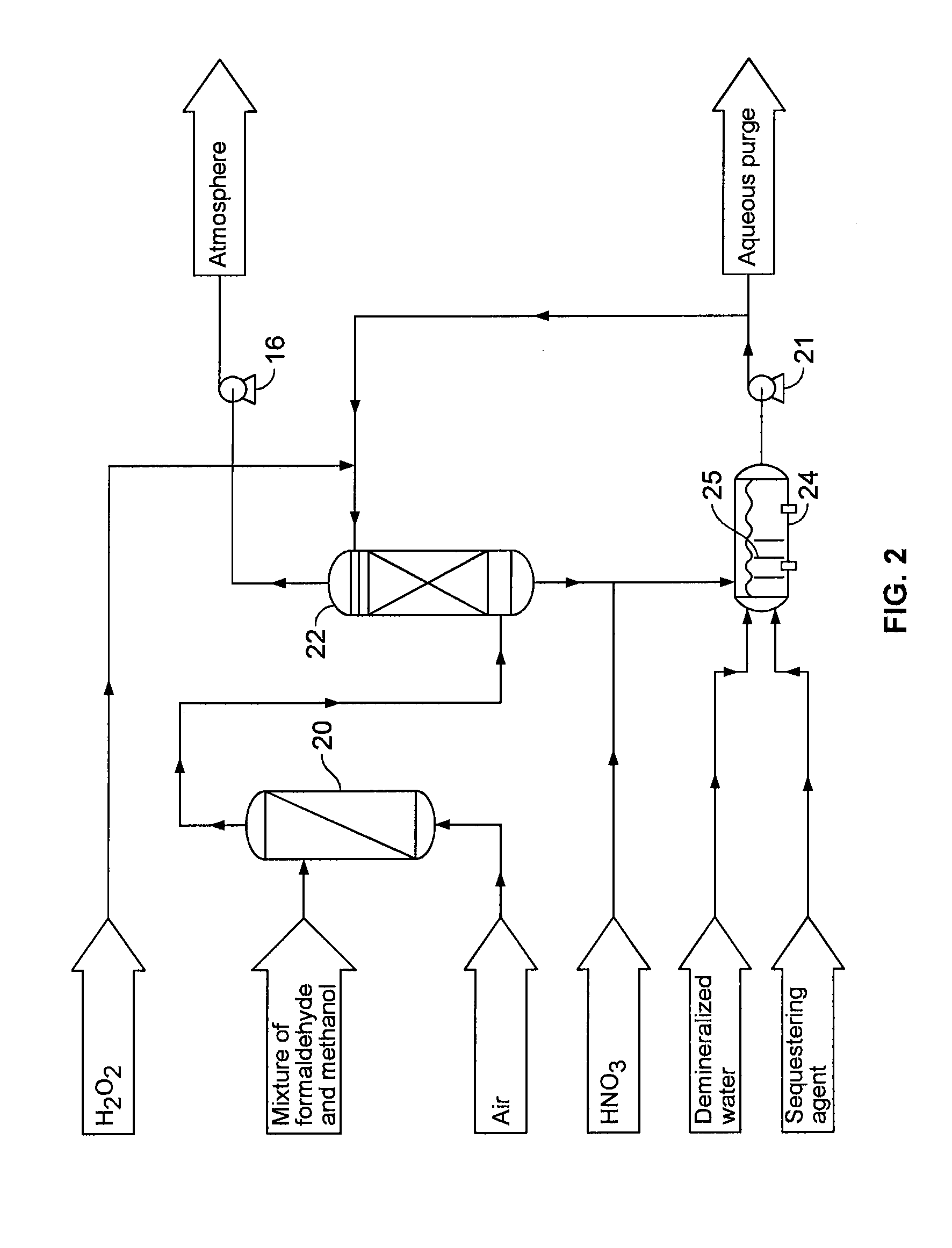Process for reducing the content of water soluble volatile organic compounds in a gas
- Summary
- Abstract
- Description
- Claims
- Application Information
AI Technical Summary
Benefits of technology
Problems solved by technology
Method used
Image
Examples
example 1
Reducing the Formaldehyde and Methanol Content of a Gas Stream at Laboratory Scale
[0052]On a laboratory scale system which is similar to the one represented on FIG. 2, several tests have been conducted. A gas having an air flow rate of 80 liters / minute and a concentration of about 100 mg / m3 of formaldehyde and about 55 mg / m3 of methanol was treated. An absorption tower filled with stainless steel random packing and a glass reaction flask were used at temperature of about 35° C. to about 55° C. The number of transfer units in the absorption tower was estimated at 7.
[0053]In the various tests, the reaction was carried out at a pH of about 1.8 to about 3.2. The pH was controlled by the addition of nitric acid. In one embodiment, the experiments were carried out at a pH of about 1.8 to 2.2. A sequestering agent, for example oxalic acid, was added to demineralised water to obtain a molar ratio sequestering agent:metal catalyst (Fe2+ obtained from FeSO4) of about 2:1 to about 6:1. Accordi...
example 2
Reducing the Formaldehyde and Methanol Content of a Gas Stream Coming From a Particle Board Dryer
[0055]Several tests were made on a pilot scale system, which is similar to the system represented on FIG. 3. A gas having an air flow rate of about 2 000 m3 / h and having a concentration in formaldehyde of about 30 mg / m3 to about 160 mg / m3 and in methanol of about 10 mg / m3 to about 50 mg / m3 at a temperature of about 35° C. to about 55° C. was treated. The pH was controlled by the use of nitric acid at a value of about 1.9 to 2.8. In one embodiment, the pH was about 2.2 to about 2.6. A sequestering agent, for example oxalic acid, was added to demineralised water to obtain a molar ratio sequestering agent:metal catalyst (Fe2+ obtained from FeSO4) of about of about 2:1 to about 6:1. According to one embodiment, the ratio was about 4:1. The metal catalyst concentration was about 20 mg / L to about 25 mg / L (Fe2+ ions). The reaction tank had a residence time of about 20 minutes. This reaction tan...
example 3
Reducing the Formaldehyde and Methanol Content of a Gas Stream Coming From a MDF Board Dryer
[0058]Several tests were made on a pilot scale system, which is similar to the system represented on FIG. 3. A gas having an air flow rate of about 1 275 m3 / h and having a concentration in formaldehyde of about 82 mg / Nm3with a standard deviation of about 23.9 mg / Nm3 and in methanol of 92 mg / Nm3with a standard deviation of about 22.1 mg / Nm3 at a temperature of about 60° C. was treated. The pH was controlled by the use of nitric acid at a value of about 1.9 to 2.8. In one embodiment, the pH was about 2.2 to about 2.6. A sequestering agent, for example oxalic acid, was added to demineralised water to obtain a molar ratio sequestering agent : metal catalyst (Fe2+ obtained from FeSO4) of about of about 2:1 to about 6:1. According to one embodiment, the ratio was about 4:1. The metal catalyst concentration was about 20 mg / L to about 25 mg / L (Fe2+ ions). The reaction tank had a residence time of abo...
PUM
| Property | Measurement | Unit |
|---|---|---|
| Fraction | aaaaa | aaaaa |
| Concentration | aaaaa | aaaaa |
| Nuclear radiation | aaaaa | aaaaa |
Abstract
Description
Claims
Application Information
 Login to View More
Login to View More - Generate Ideas
- Intellectual Property
- Life Sciences
- Materials
- Tech Scout
- Unparalleled Data Quality
- Higher Quality Content
- 60% Fewer Hallucinations
Browse by: Latest US Patents, China's latest patents, Technical Efficacy Thesaurus, Application Domain, Technology Topic, Popular Technical Reports.
© 2025 PatSnap. All rights reserved.Legal|Privacy policy|Modern Slavery Act Transparency Statement|Sitemap|About US| Contact US: help@patsnap.com



